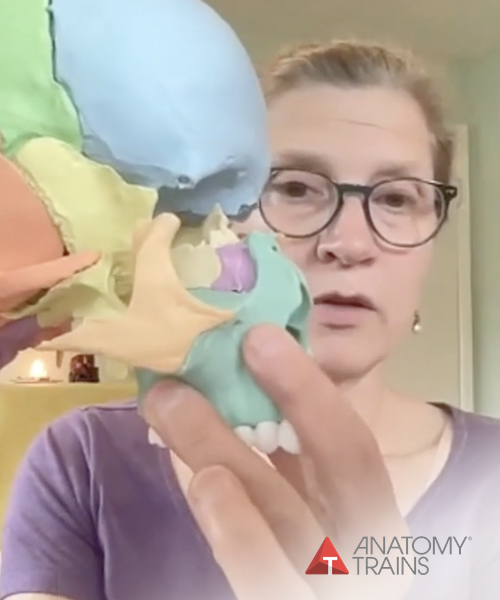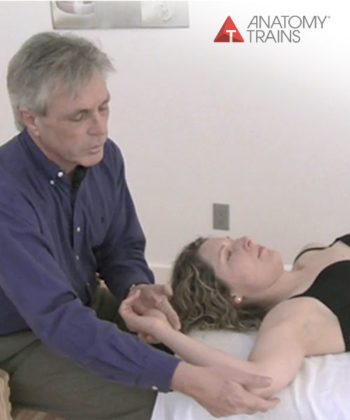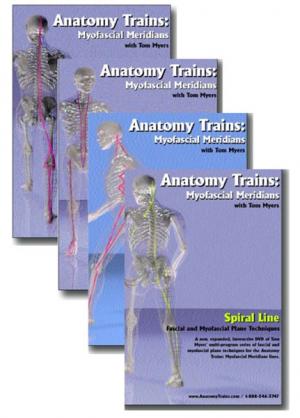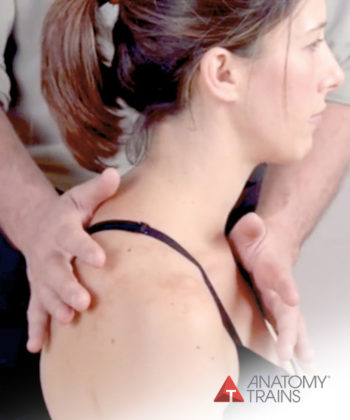Take your knowledge of the Anatomy Train lines one step farther — into the cranium! In this 12 hour webinar, we’ll look at the structure and function of the cranial sutures, from the lens of Tom Myers’ myofascial meridians. See how postural/movement patterns extend subtly into the head.
The cranium, like the pelvis and rib cage, is meant to transmit force and movements — though on a much smaller scale. The cranial sutures do an extremely elegant job of providing a well-stabilized environment for the central nervous system, which needs to remain relatively still. At the same time, the biotensegrity of the structure allows for compression and decompression at the sutures, enhancing physiological function (blood transport, neural conduction, and movements for swallowing, sinus drainage and sight).

Using the AT lines as a map, we’ll review a selection of cranial sutures — where they are, how they move, and how to tell if they are ‘sticky’. From assessment, we’ll shift to treating the sutures with specific and effective methods. This gentle approach incorporates both mobilizations (biomechanical) and fluid ‘listening’ strategies (cranial wave).
Ideally you will have a model to work on during this webinar — the practical learning will include both seated and table work. We’ll also use a balloon for highlighting palpation strategies during the first module.
- No prior experience in craniosacral therapy required.
- These methods are suitable for teens/adults.
- Learn more about Lauren Christman and her work.
Run time: Approximately 12 hours; recorded from a live presentation
Earns: 12 CEUs NCBTMB, pending; 12 CEs IASI Cat. 1







Reviews
There are no reviews yet.